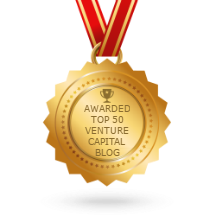|
New applications that sit at a legal gray area for financing innovative companies. Excited investors pouring in millions and millions of capital. Regulators and policy makers trying to understand the new models and introduce investor safeguards as well as industry guidelines. Financial institutions watching by the sidelines, evaluating what their next move will be and how to respond. The year is 2010 and everyone is excited about the prospect of crowdfunding.
This is the first true fintech ‘revolution’ I was truly part of, so to me everything that is going on with Initial Coin Offerings or Initial Token Offerings bears a striking resemblance. Yet if we break it down, the actual development of the market while profound was a lot different than what we had expected. 1) Moonshot Initiatives Lead To Long Term Adoption The very start of the equity crowdfunding market saw innovators like Seedrs, Angelist, the Grow VC Group create online marketplaces for startup financing, and other related pioneers such as Kiva grew their global loan marketplace. There were hundreds if not thousands of other companies we saw over the years, yet ultimately approaches diverged, become more specialized or found niches to truly lead the way in. There was also a clear separation of regulated securities platforms and non-securities platforms that paved their own ways, ultimately serving a different client demand and use case. These specific applications started the discussion, forced incumbents, challengers, service providers (payments companies, fraud prevention, ID verification services) and policy makers to examine their approaches and decide upon what position, if any, they would play in the new market. This lead to an ecosystem that started flourishing and supporting end to end value chains, in order to serve an ultimate client value. In examining positions, many financial institutions also adopted peer-to-peer and crowd syndication technologies to their existing processes, such as raising equity capital for mid market companies from a group of investors online or providing additional loans through automated applications to fill a void left by falling bank financing in small business loans. The ecosystem of services available expanded. 2) Novel Applications Introduce Technology for Ancillary Use Cases What ICOs and cryptocurrencies have already demonstrated, is a thirst for knowledge as it relates to distributed ledger technologies (DLTs) such as blockchain and the possibility of immutability that it can afford. Yet it’s not only blockchain, but also different methods for verifying the authenticity of transactions and their order, such as models like the proof of work, proof of stake and hashgraph concepts. This is far beyond the simple use of payment currency with Bitcoin or Ether, yet those were fundamental in the process itself. While it seems there was a surprisingly negative reaction to Stripe’s recent announcement to stop accepting bitcoin as a form of payment, for anyone who actually read the announcement from the company, they cited a shifted use case of cryptocurrencies from a simple means of payment to an actual and usable asset class. This would be consistent with how the market has developed and indeep Stripe’s track record of investing into new crypto strategies and companies leveraging DLTs speaks for itself. Distributed technologies have shown promise, not only in existing applications but in applications that could not be possible without a true decentralization and mathematical validation, that is the lack of a central authority. Tokens, combined with DLTs, have also become a fascinating talking point with planned applications ranging from loyalty programs, to settlement mechanisms and liquidity for illiquid assets. 3) Regulations and Policy Frameworks Lead to Institutional Buy In One clear innovative approach to come from the peer-to-peer investing and crowdfunding applications was the regulatory sandboxes introduced and pioneered by organizations such as the Financial Conduct Authority in the UK, and ultimately leading to broad adoption through several financial regulators around the world. Started off as a pragmatic initiative to gain visibility and accountability with new services absent a fitting regulation, fostered an industry cooperation and knowledge sharing on both sides of practitioners and policy makers. This type of knowledge transfer that yields industry best practices is critical in a functioning ecosystem and it ultimately ends up benefiting the end users, giving way to a more efficient and secure ecosystem of services. It is also paramount to gaining institutional adoption, which for example is clear in peer-to-peer lending and the institutional backing of wholesale loans, which has surpassed all other capital sources. It may be that the crowdfunding wave that started in 2008-2009 has lots of parallels to the ICO and blockchain boom that started in 2016-2017, yet any new market has its own considerations. We’ve seen all sorts of experts come out trying to capitalize on both innovation cycles, yet its good to keep in mind that in transformative changes, past experience does not necessarily equal knowledge. New models and tricky because they are indeed new and the most valuable models would not have been possible with past tools. Hype curves and megatrends are good to identify and definitely to be part of, yet one has to keep eyes open and be aware of where the value lies, both short term and long term. With all the billions of dollars invested in token offerings of 2017, we are optimistic we will see a lot of tangible long term value. That does not of course mean, we will not experience one or two hiccups in the short term. Yet these hiccups, similar to those in the crowdfunding and peer-to-peer investing markets, are not what remains for the history books. That’s made up in the difference between short term and long term. The article first appeared on Difitek's Blog. |
AboutEst. 2009 Grow VC Group is building truly global digital businesses. The focus is especially on digitization, data and fintech services. We have very hands-on approach to build businesses and we always want to make them global, scale-up and have the real entrepreneurial spirit. Download
Research Report 1/2018: Distributed Technologies - Changing Finance and the Internet Research Report 1/2017: Machines, Asia And Fintech: Rise of Globalization and Protectionism as a Consequence Fintech Hybrid Finance Whitepaper Fintech And Digital Finance Insight & Vision Whitepaper Learn More About Our Companies: Archives
January 2023
Categories |





 RSS Feed
RSS Feed
